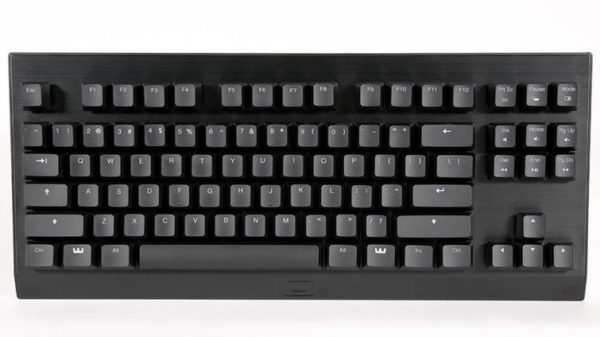
The Wooting One is the first commercially available, fully analog mechanical keyboard. The prospect of analog sensing technology in keyboards is still somewhat novel, but if it catches on with gamers–and we believe it should and will–this is a landmark moment in this technology’s history.
With the One in hand, though, we did what we always do, which is take a dazzling piece of technological progress and ruthlessly pick it apart, in every sense of the word. What follows is our deep look at the One and all of its constituent parts.
To fully understand the One and what it can do (and why that’s important), it’s perhaps instructive to think of it in pieces: as 1) a mechanical gaming keyboard, as 2) an optical switch keyboard, and 3) as an analog keyboard.
Looking at the Wooting One, and even after popping off a cap to see what’s underneath, you wouldn’t notice that it’s any different than any other mechanical keyboard. Indeed, that’s because that’s what it is. The switches are mechanical. It offers RGB lighting. Its design is reminiscent of Razer’s BlackWidow X line, even. It has configuration software that lets you tweak settings and make key assignments.
The switches, though, are Flaretech optical switches. Again, they’re still mechanical switches (the Wooting One ships with both Red and Blue switches), but the sensing method is different than Cherry MX and its clones. Instead of two metal contacts touching and triggering a key event, an optical sensor mounted on the PCB detects the switch stem’s depth as it plunges. (This is a gross oversimplification of the technology. For a primer on optical switch technology and how it works, read this.)
Because of the nature of the optical sensing technology, Wooting was able to give the One analog input capabilities. We’ve discussed what that means numerous times in these digital pages, and we’ll discuss it in more detail in this article, but in a nutshell, a normal keyboard uses digital input (each keypress is a simple on/off command), whereas analog input gives you degrees of control through the entire keypress.
The simplest example involved moving a character in a game. With a normal keyboard, your character is either stock still (no input) or running (press W). With analog input, though, when you press W, the character would creep slowly, then walk, then jog, then sprint, depending on how far down you press the switch.
In a way, then, you could look at the One as a more evolved gaming keyboard, or you could view it as one device that’s trying to do a lot all at once. In reality, it’s both. Let’s take a closer look.











